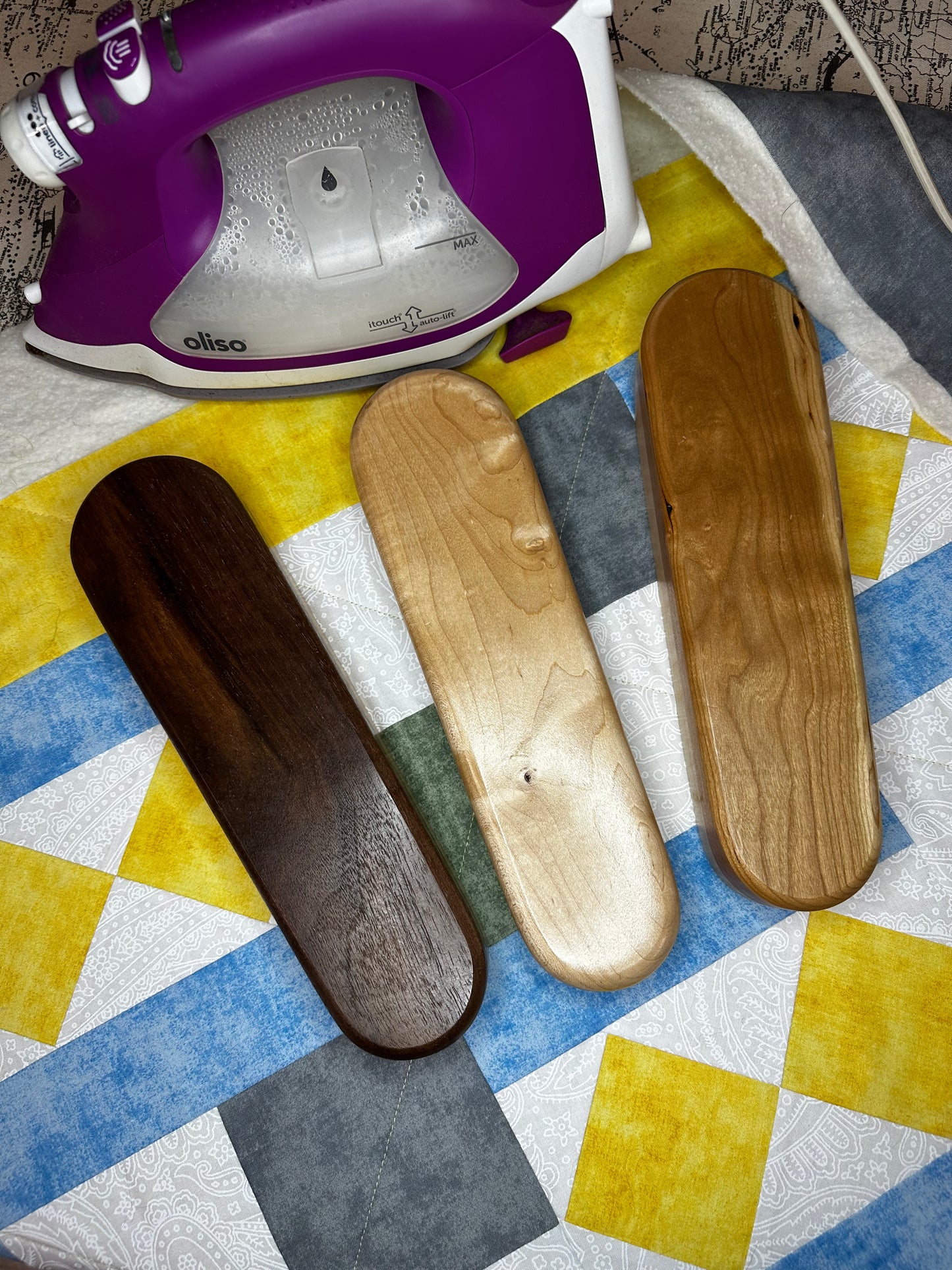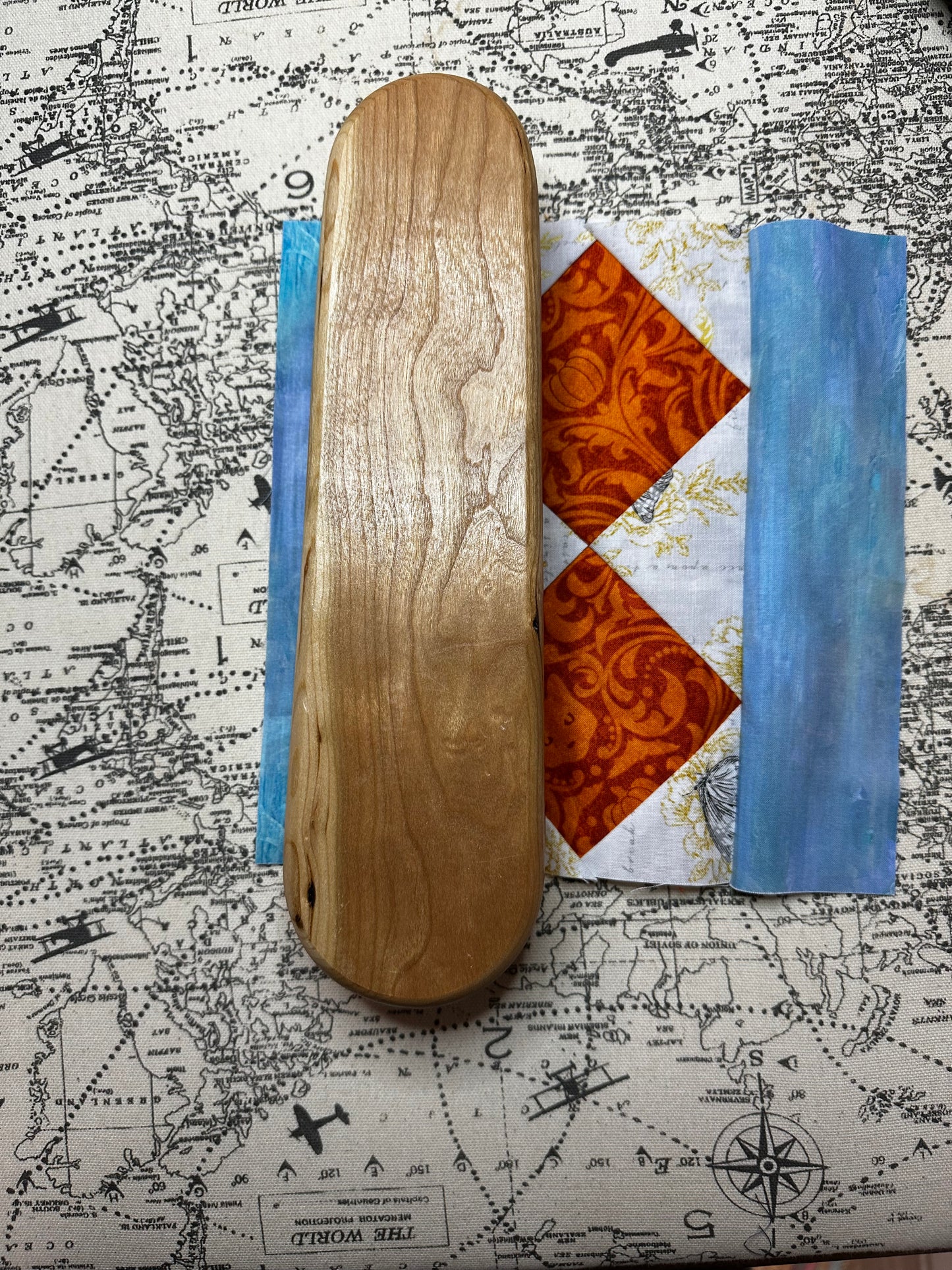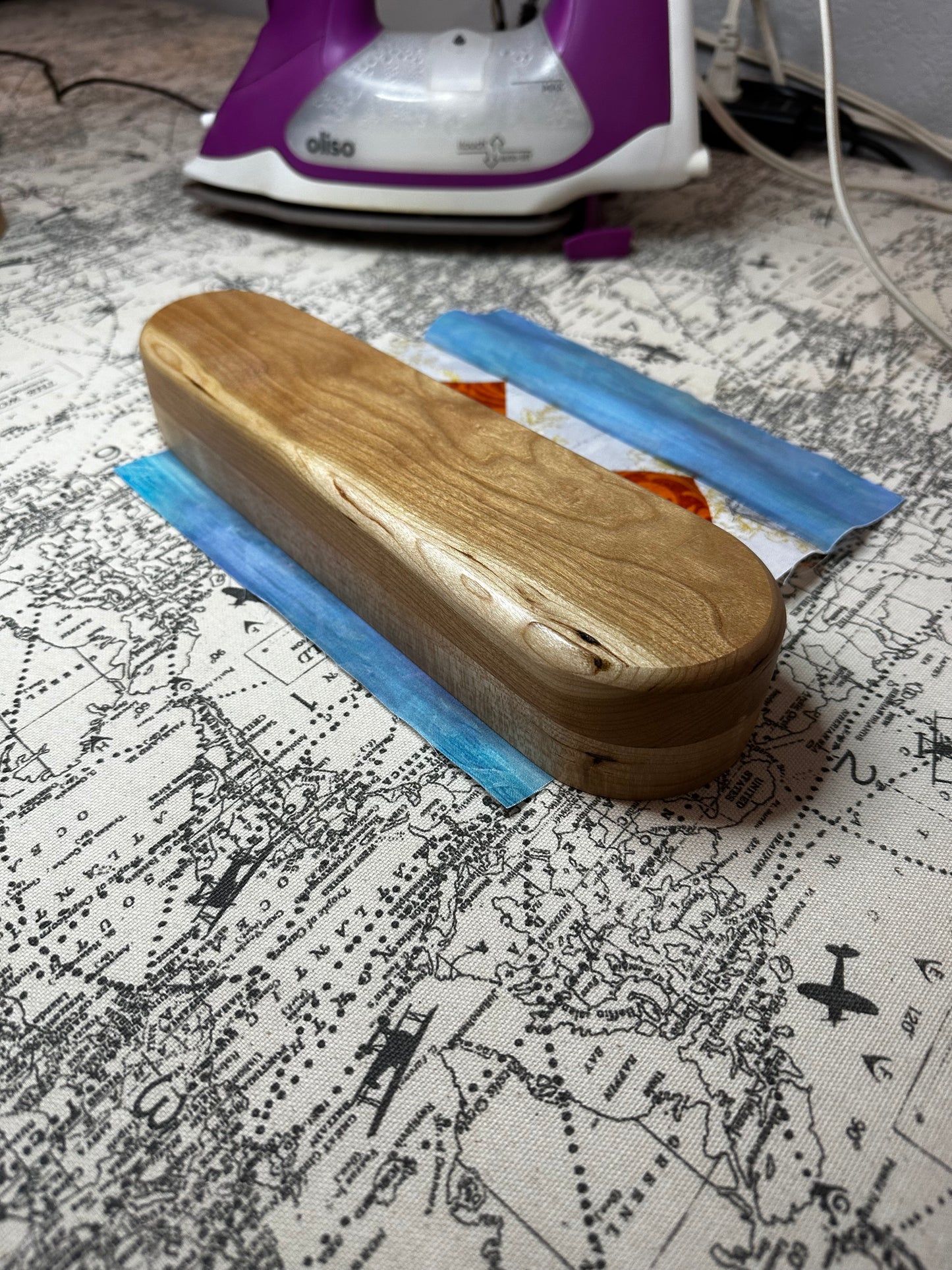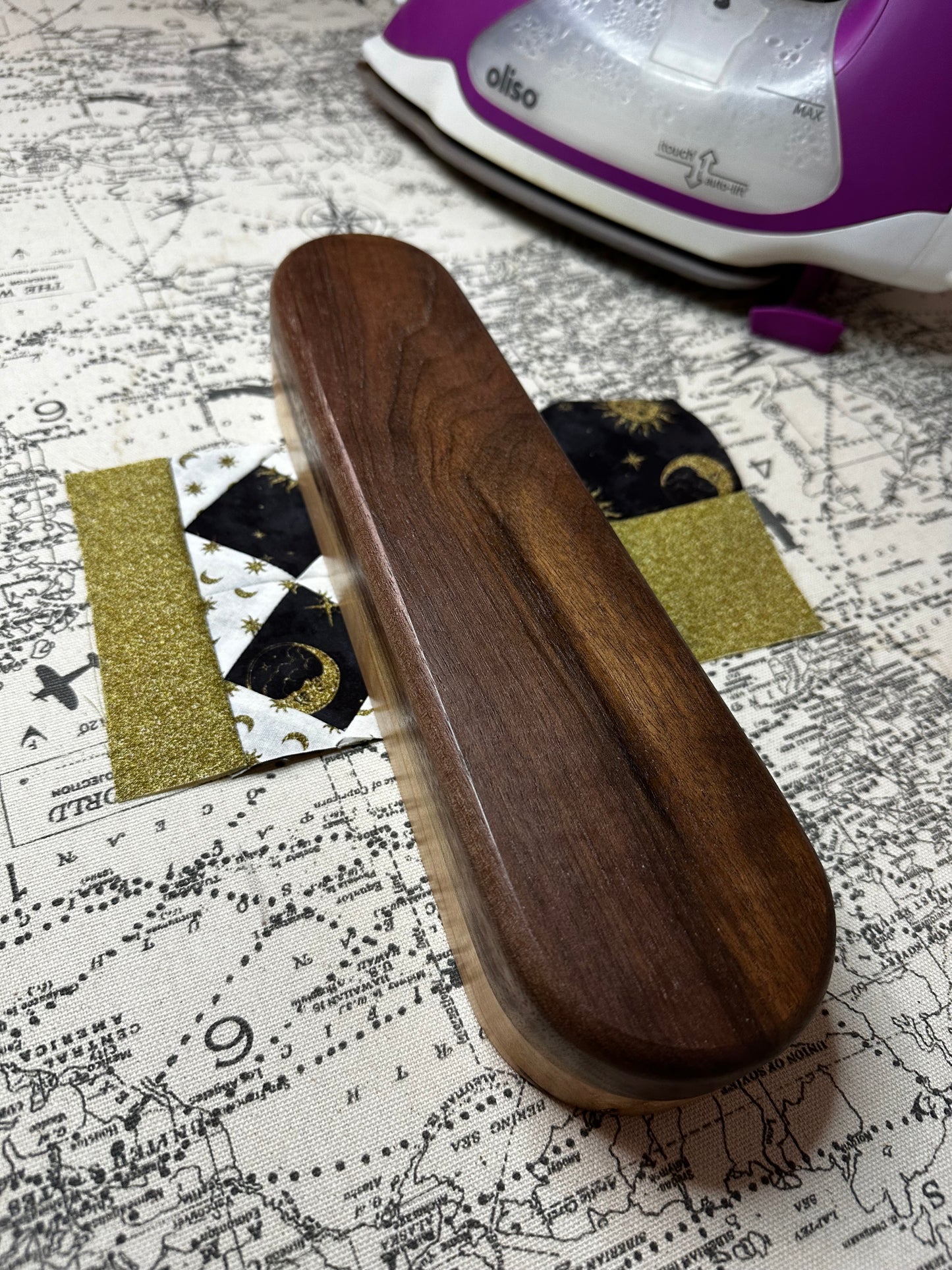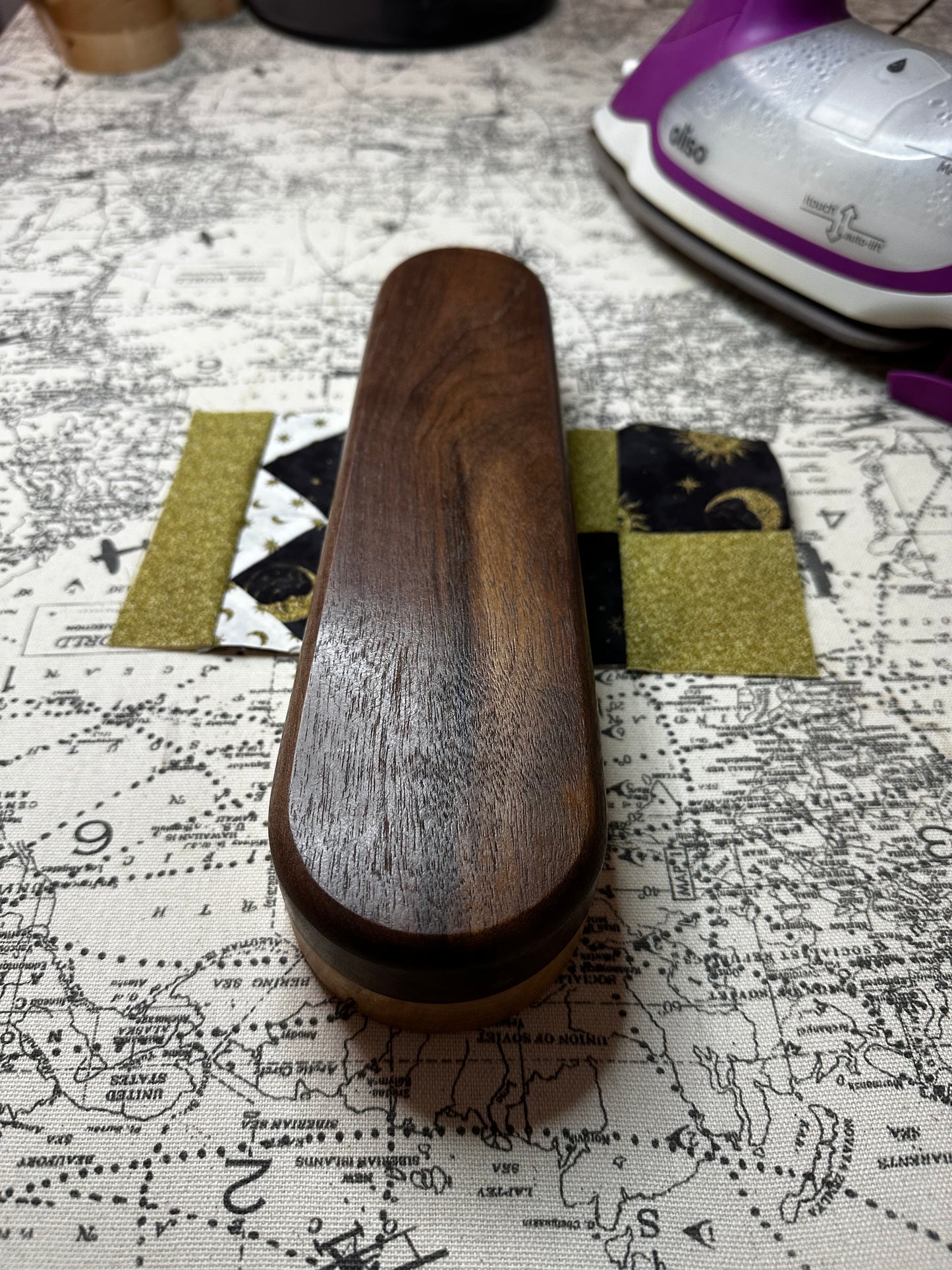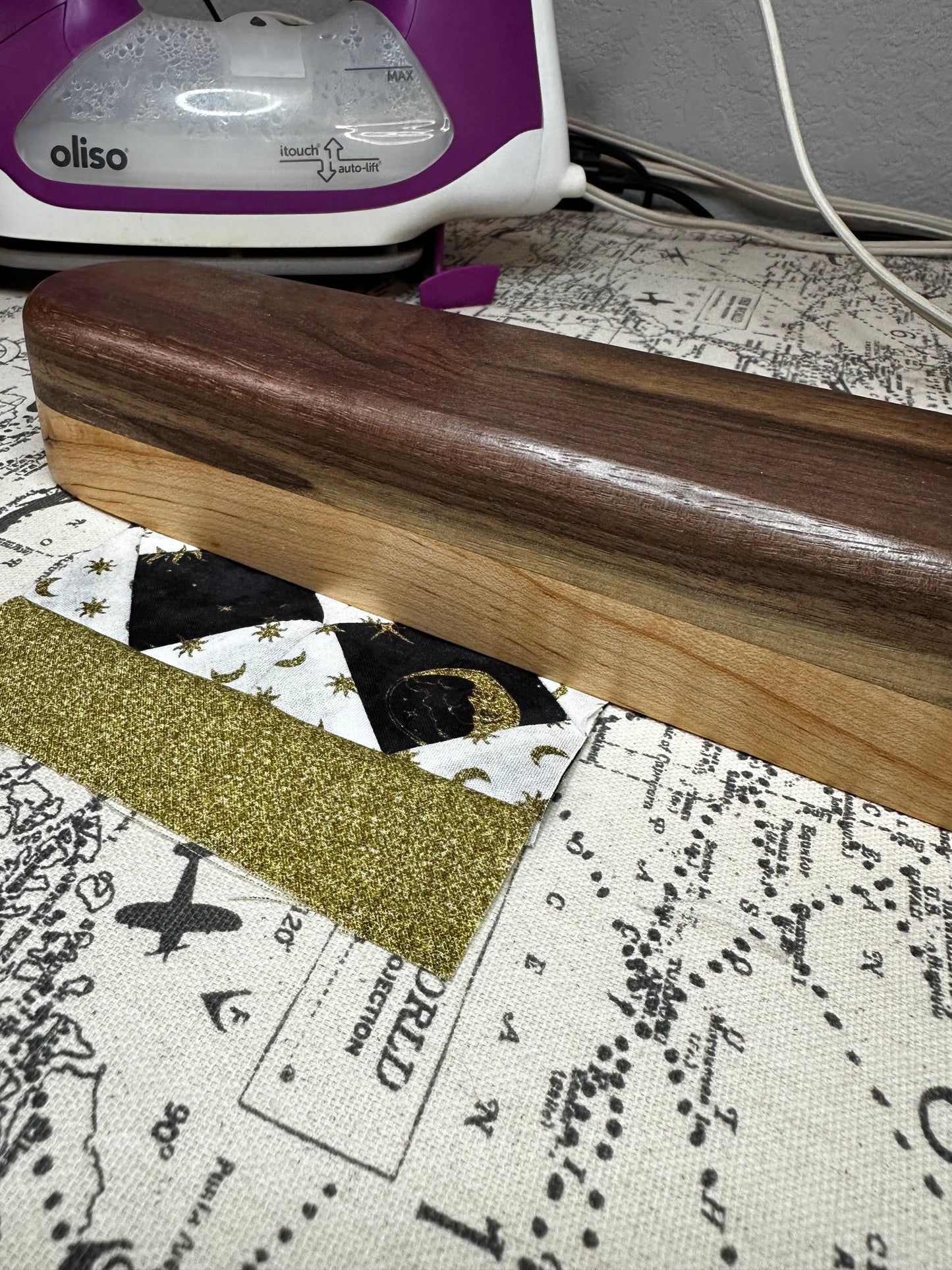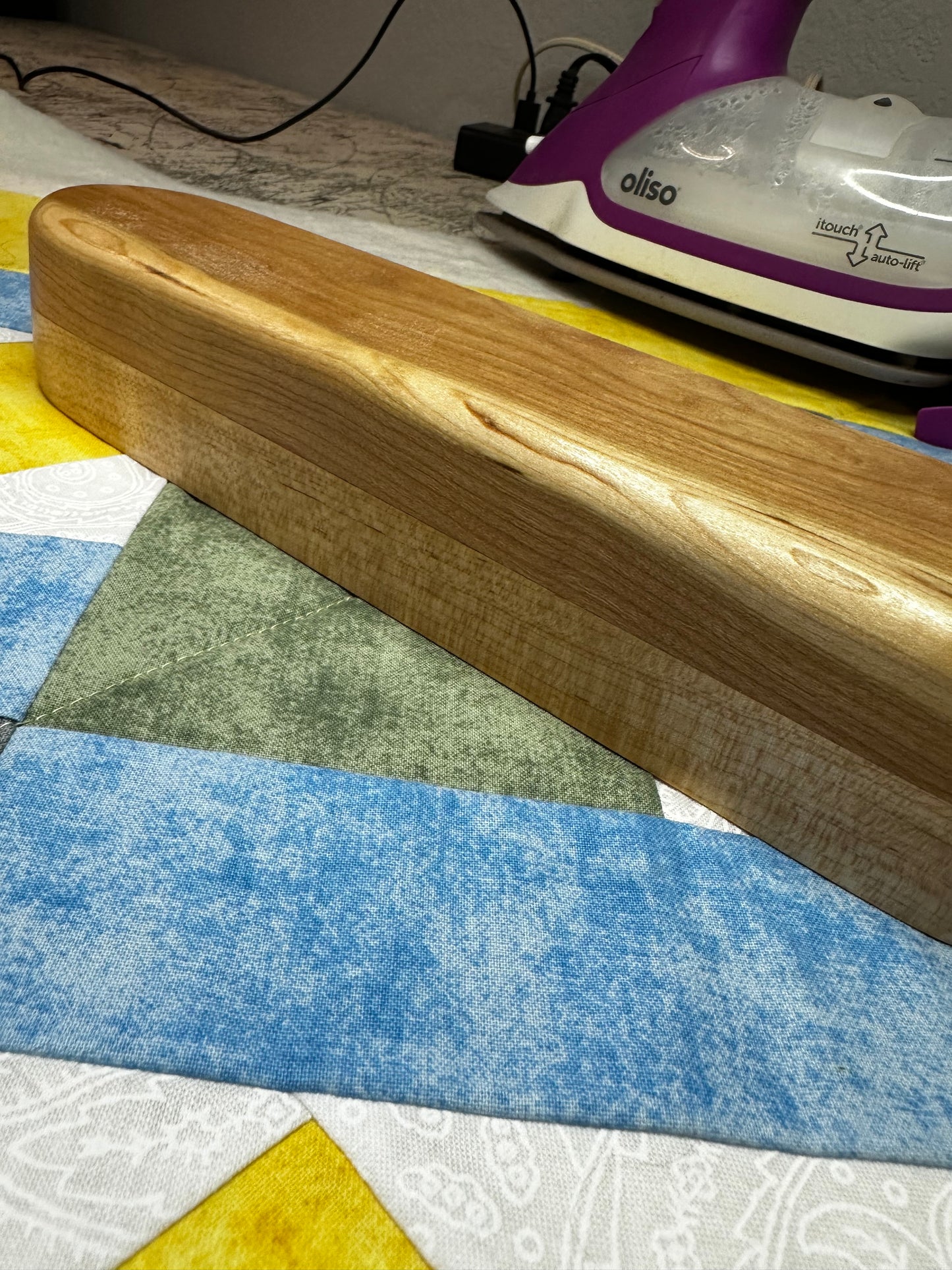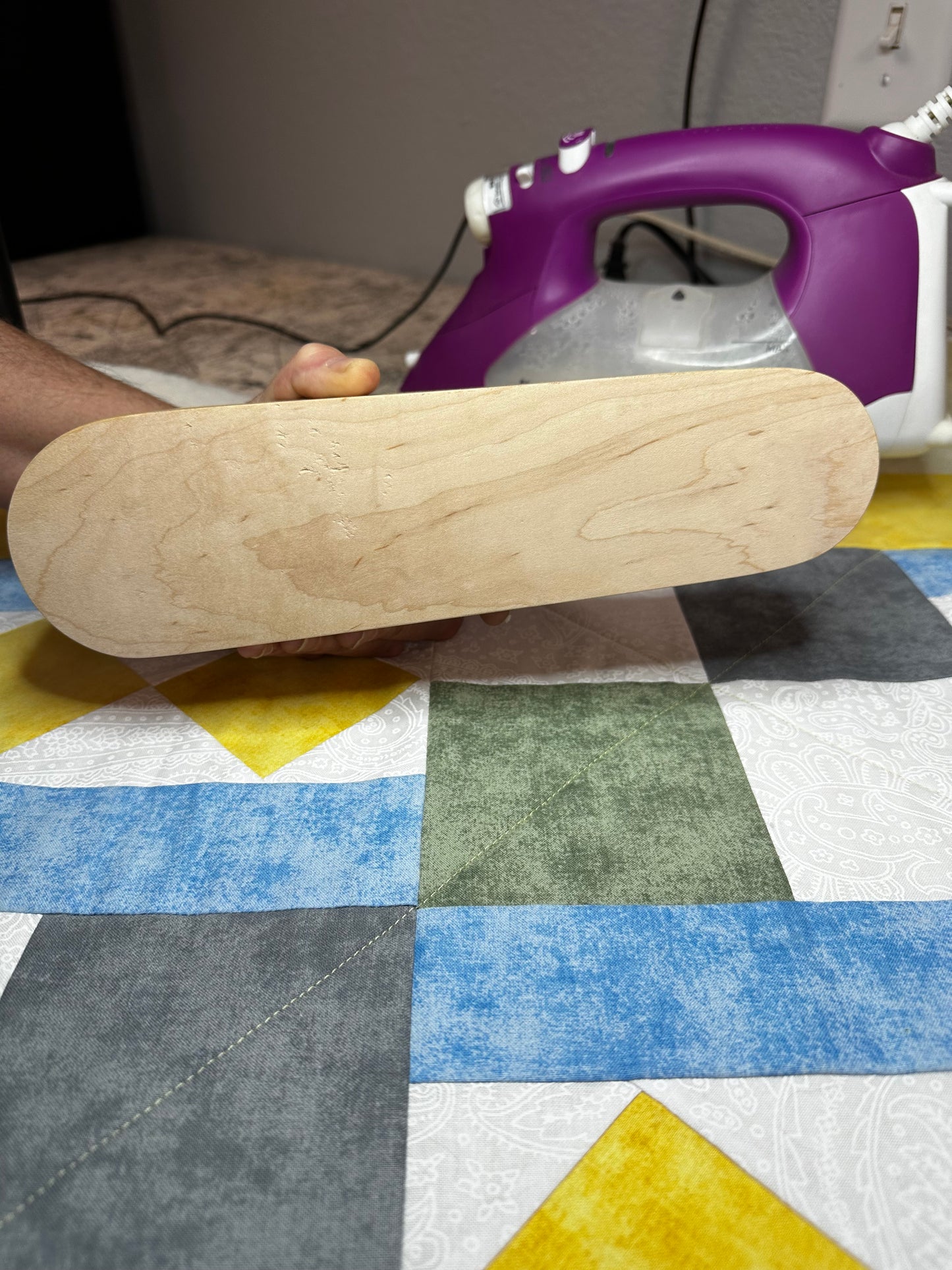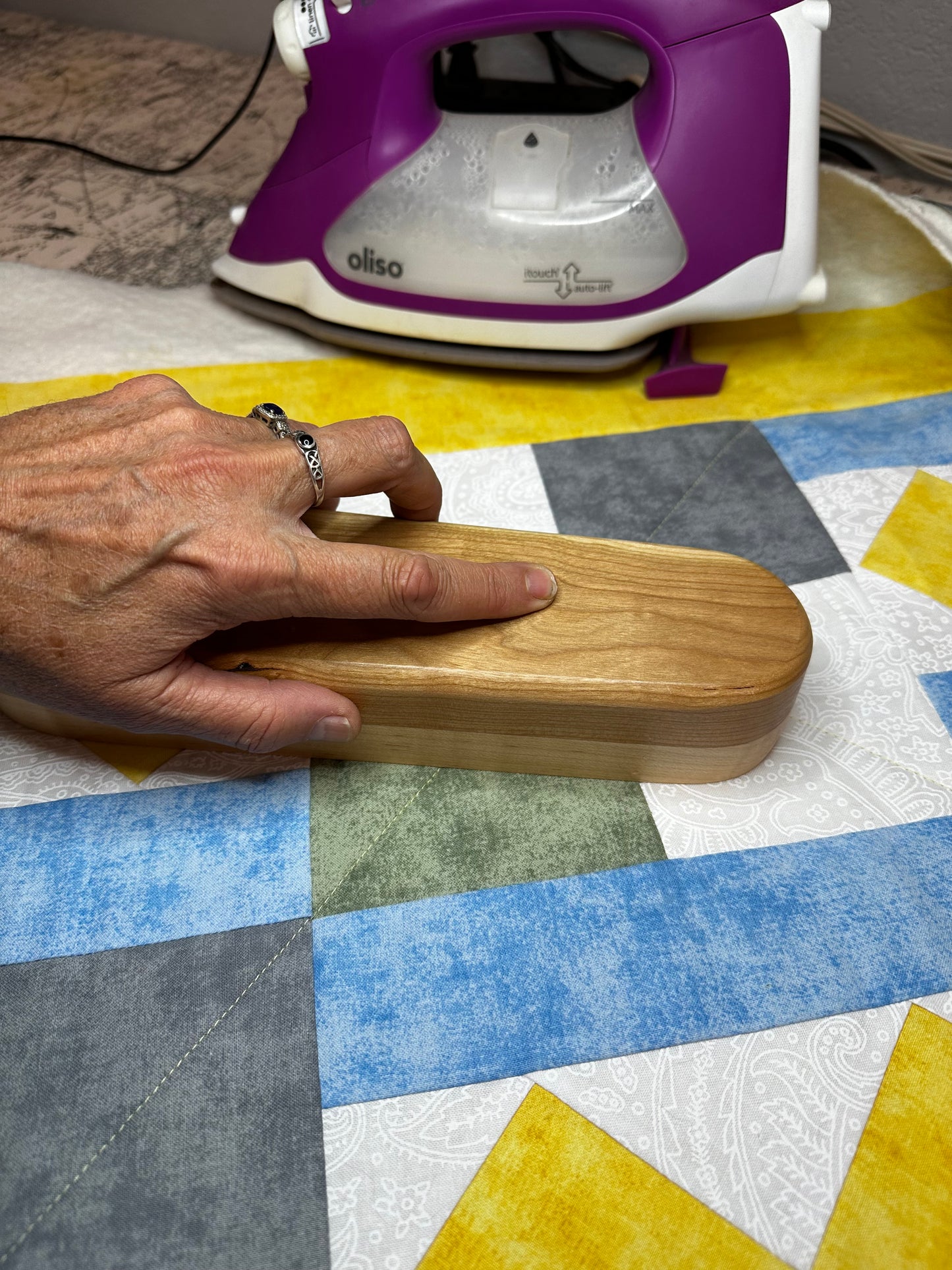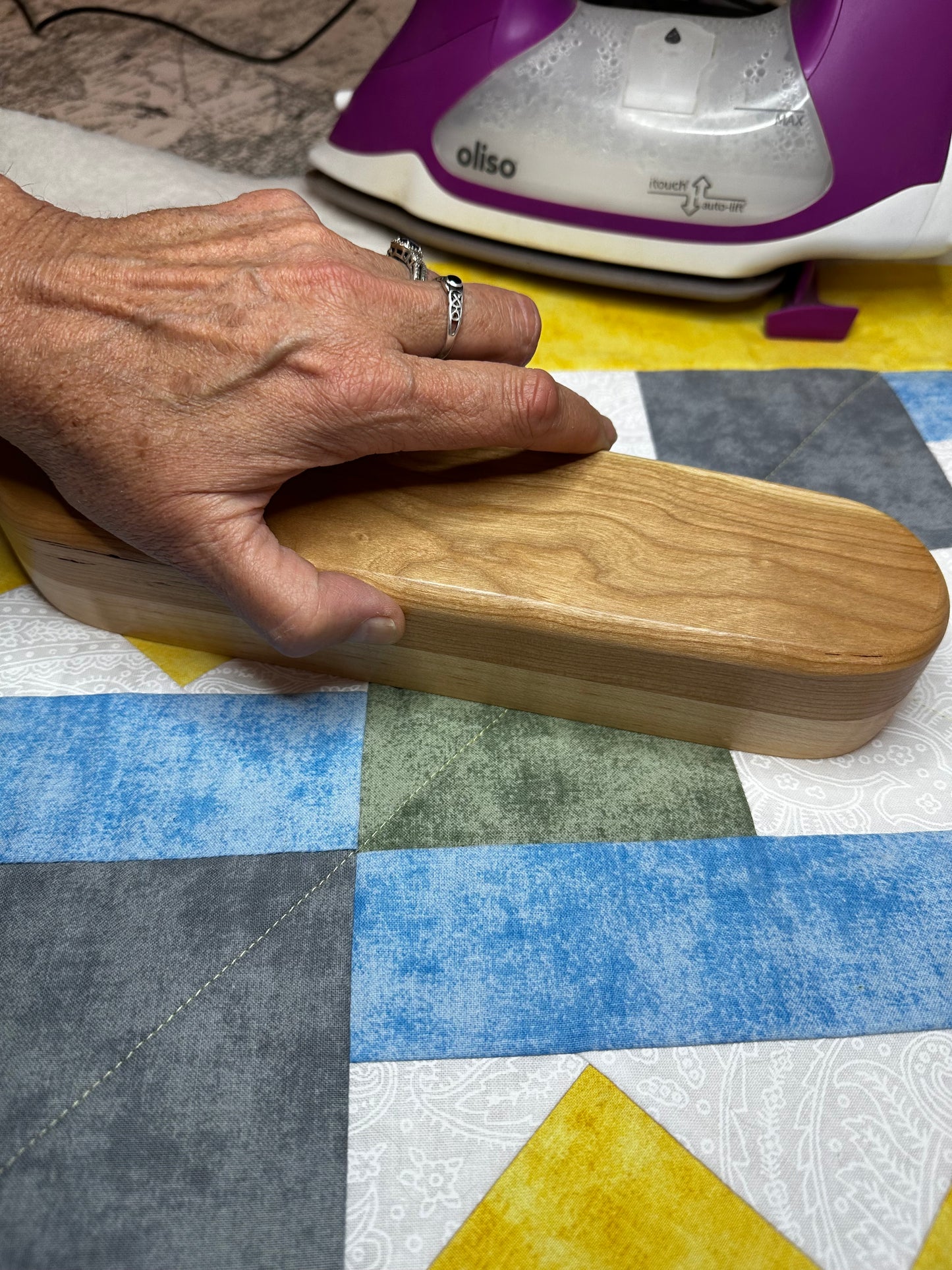MK Designs Fine Woodworking and More
Tailors Clapper for Sewing, Pressing, and Quilting
Tailors Clapper for Sewing, Pressing, and Quilting
A tailor's clapper is a specialized tool used in sewing and tailoring to help achieve crisp, flat, and well-pressed seams. It is typically made of hardwood, such as maple, and has a rectangular shape with smooth, flat surfaces. Tailor's clappers come in various sizes, but they are generally around 9 to 12 inches long, 2 to 3 inches wide, and about 1 inch thick.
These Clappers are handmade and made to order. They are available as solid maple, Walnut top with maple bottom, or cherry top with maple bottom.
Size:
11" x 3" x 1-1/2"
The top is rounded over for comfortable handling while using and is finished with a lacquer to avoid any finish transfer to fabric.
The bottom is unfinished so the clapper can work as intended.
Here are the main components and functions of a tailor's clapper:
1. Smooth, Flat Surfaces: The bottom surface of a tailor's clapper is smooth and flat. These surfaces are designed to be placed on top of a freshly pressed seam to absorb and distribute heat and pressure evenly.
2. Weight: Tailor's clappers have a substantial weight to them, which is important for applying adequate pressure to the fabric. The weight helps to set the seam and crease effectively.
3. Rectangular Shape: The clapper's rectangular shape allows for easy maneuvering and placement on various fabric types and seam sizes.
The primary purpose of a tailor's clapper is to improve the results of pressing and setting seams during the sewing process. Here's how it is typically used:
1. After using an iron to press a seam open or closed, the tailor places the clapper directly on top of the seam while it's still hot.
2. The weight of the clapper, combined with the heat from the ironed fabric, helps to set the seam and crease, making it crisp and flat.
3. The tailor holds the clapper in place for a few seconds to allow the fabric to cool and set. The wood absorbs excess moisture and heat, enhancing the seam's appearance and durability.
4. Once the fabric has cooled and the seam is set, the tailor can remove the clapper and move on to the next section of their project.
Tailor's clappers are especially useful when working with fabrics like wool, linen, and cotton, as they help create sharp edges and smooth seams. They are a valuable tool in achieving professional-looking and well-finished garments.
Couldn't load pickup availability
Share
